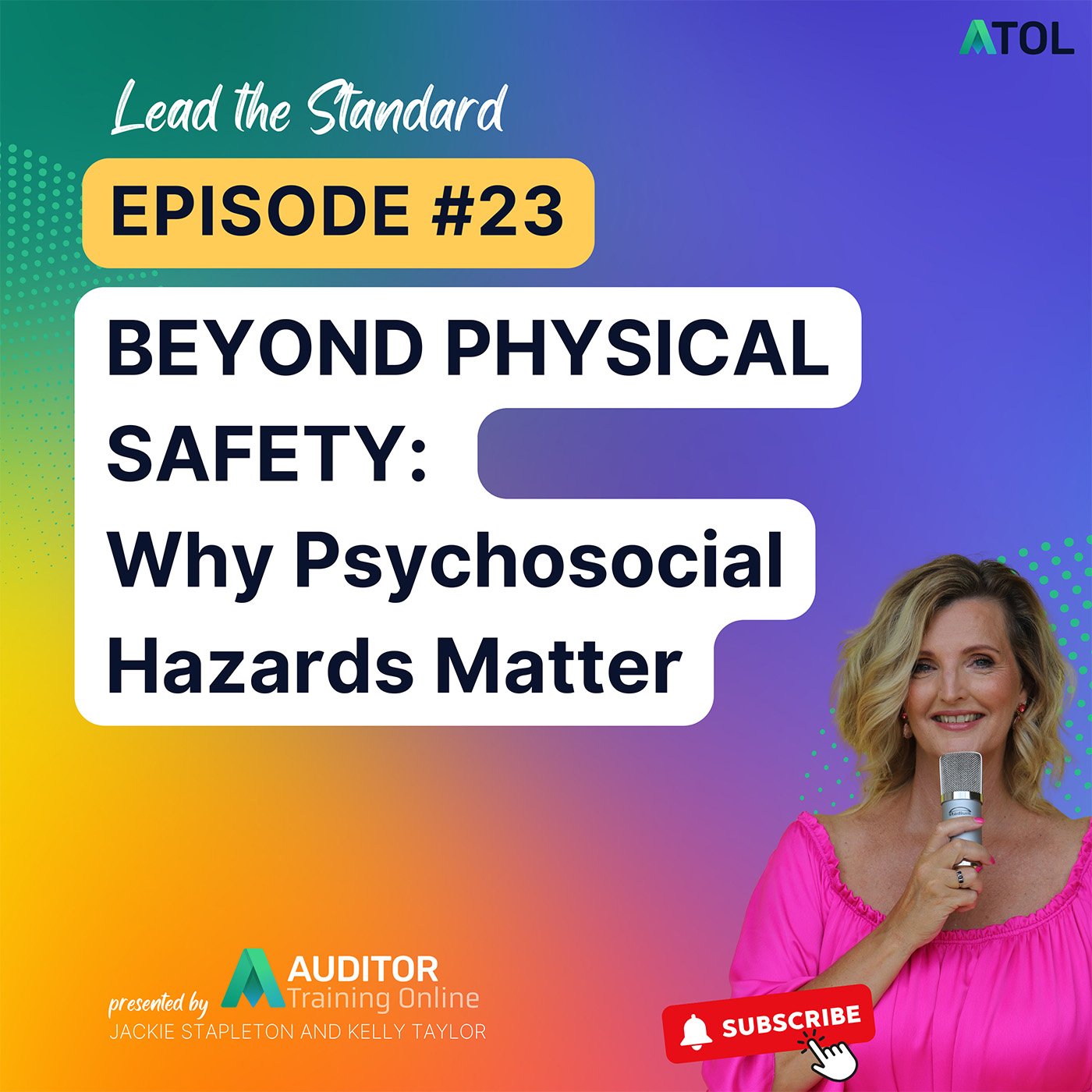Beyond Physical Safety: Why Psychosocial Hazards Matter
Auditing • 8 October 2024 12:00:00 AM • Author: Kelly Taylor

Last week, Jackie had a bit of an epiphany—"People are at the heart of safety," she shared, reflecting back on her trek along the Kokoda Trail. Jackie's insight reminded me of my own Kokoda trek 14 years ago. The people were instrumental in me through the mud and mountains too! Though not everyone was motivated (or motivating) all the time.
Which was a great segue for me into another OH&S related topic that's just as important as physical hazards but is often overlooked: psychosocial hazards. These are the social and psychological risks present in workplaces that can affect not only the health of individuals but the collective productivity of an organisation. They encompass factors such as work-related stress, harassment, and a lack of support, all of which can significantly impact mental well-being.
In many ways, our team is like that trek up Kokoda—when we work together, we can overcome the toughest challenges, but if we're not mindful of the load we're placing on one another, the journey becomes much harder. This week, let's focus on identifying and managing those psychosocial hazards that may be lurking in our work environments.

While workloads and pressures will always exist, it’s how we manage them—and how we support one another—that defines the experience and the outcome.
Think of psychosocial hazards as the unseen weight in a backpack. We can all carry a certain amount of weight, but when that load becomes too heavy or unevenly distributed, it becomes exhausting. Just as hikers need to redistribute weight to keep moving forward, organisations must identify and address psychosocial risks to maintain a healthy, motivated team.
Psychosocial Hazards: A Significant Workplace Challenge
Workers exposed to psychosocial hazards face higher risks of psychological injuries and mental health challenges. Mental health claims now represent 9% of serious workers' compensation claims, showing a 36.9% increase since 2017-18, with recovery times four times longer than physical injuries. This rising issue is highlighted in the February 2024 Safe Work Australia data report, Psychological Health and Safety in the Workplace.
For more details, explore the full report here.
/PD%20Sixty%20Second%20Skills%20-%20Health%20and%20Wellbeing.jpg?width=700&name=PD%20Sixty%20Second%20Skills%20-%20Health%20and%20Wellbeing.jpg)
60-Second Skills - Health & Wellbeing
For many of us, the fine line between our work and home lives has become blurred. We've got some tips on how you can achieve Work/Life Balance and make these new changes work for you.
Model: The "PEACE" Approach to Managing Psychosocial Hazards
As highlighted above, psychosocial hazards are becoming an increasingly critical issue, addressing these hazards not only reduces the risk of psychological injury but also fosters a healthier, more productive work environment. Implementing effective strategies is essential, and this brings us to a practical approach.
The PEACE model not only highlights the key steps for tackling psychosocial hazards but also fosters a culture of ongoing mental health prioritisation:

P – Prioritise Mental Health:
Start by acknowledging the importance of mental health in the workplace. Recognise that addressing psychosocial hazards is as crucial as managing physical risks.
E – Evaluate Risks:
Regularly assess the workplace to identify psychosocial hazards, including excessive workloads, lack of support, and poor communication channels.
A – Actively Address Issues:
Implement targeted interventions, such as adjusting workloads, fostering open communication, and providing training to mitigate risks.
C – Create Supportive Environments:
Promote a workplace culture where mental health is openly discussed, and support systems are readily available for employees experiencing challenges.
E – Evaluate and Adjust Continuously:
Make psychosocial risk management an ongoing process by continually monitoring the impact of your interventions and refining them as needed.
/PD%20Health%20%26%20Safety%20Leadership%20(Australia)-1.jpg?width=700&name=PD%20Health%20&%20Safety%20Leadership%20(Australia)-1.jpg)
All OH&S Courses
The ATOL ISO 45001 OH&S Management Systems Course Suite is internationally recognized and completed fully online. These courses are designed to provide a comprehensive understanding of ISO 45001 Occupational Health and Safety management systems and are often combined with an Internal, Lead and/or Integrated Management Systems qualifications. (Exemplar Global - OH 45001)
Your Next Steps to Manage Psychosocial Hazards
- Identify Psychosocial Risks: Review your workplace for hazards like excessive workloads or lack of support.
- Take Action: Implement solutions like clearer communication and workload adjustments.
- Encourage Dialogue: Foster discussions on mental health to surface ongoing concerns.
- Monitor Progress: Continually assess the impact of your actions and make adjustments.
- Complete the Course: Improve your work-life balance knowledge by enrolling in our free Work and Life Balance Course.

Ready to Partner with an Industry Professional
Gain confidence & become a Leader in the ISO Industry. Work with an ISO Career Expert Now and start building a brighter future.Kelly Taylor
Kelly Taylor is the Business Operations Manager at ATOL and has been a core part of the team since 2015. With a background in administration and experience across nearly every function of the business—from training delivery to project leadership—Kelly now oversees operations with a focus on clarity, structure, and practical impact. She’s driven by a genuine passion for supporting others, sharing knowledge, and helping teams and individuals thrive through change and growth.

